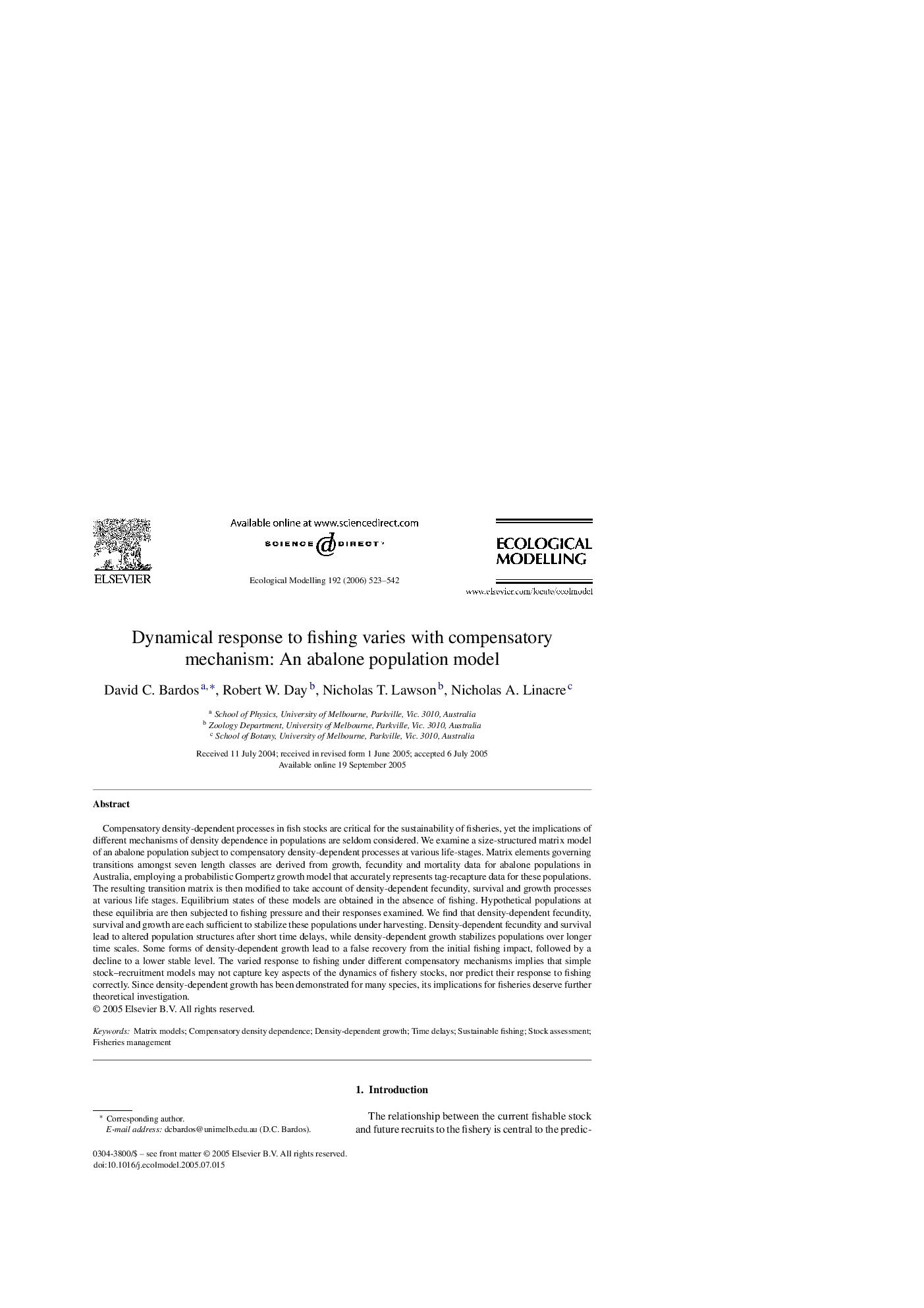| Article ID | Journal | Published Year | Pages | File Type |
|---|---|---|---|---|
| 4379292 | Ecological Modelling | 2006 | 20 Pages |
Abstract
Compensatory density-dependent processes in fish stocks are critical for the sustainability of fisheries, yet the implications of different mechanisms of density dependence in populations are seldom considered. We examine a size-structured matrix model of an abalone population subject to compensatory density-dependent processes at various life-stages. Matrix elements governing transitions amongst seven length classes are derived from growth, fecundity and mortality data for abalone populations in Australia, employing a probabilistic Gompertz growth model that accurately represents tag-recapture data for these populations. The resulting transition matrix is then modified to take account of density-dependent fecundity, survival and growth processes at various life stages. Equilibrium states of these models are obtained in the absence of fishing. Hypothetical populations at these equilibria are then subjected to fishing pressure and their responses examined. We find that density-dependent fecundity, survival and growth are each sufficient to stabilize these populations under harvesting. Density-dependent fecundity and survival lead to altered population structures after short time delays, while density-dependent growth stabilizes populations over longer time scales. Some forms of density-dependent growth lead to a false recovery from the initial fishing impact, followed by a decline to a lower stable level. The varied response to fishing under different compensatory mechanisms implies that simple stock-recruitment models may not capture key aspects of the dynamics of fishery stocks, nor predict their response to fishing correctly. Since density-dependent growth has been demonstrated for many species, its implications for fisheries deserve further theoretical investigation.
Keywords
Related Topics
Life Sciences
Agricultural and Biological Sciences
Ecology, Evolution, Behavior and Systematics
Authors
David C. Bardos, Robert W. Day, Nicholas T. Lawson, Nicholas A. Linacre,
